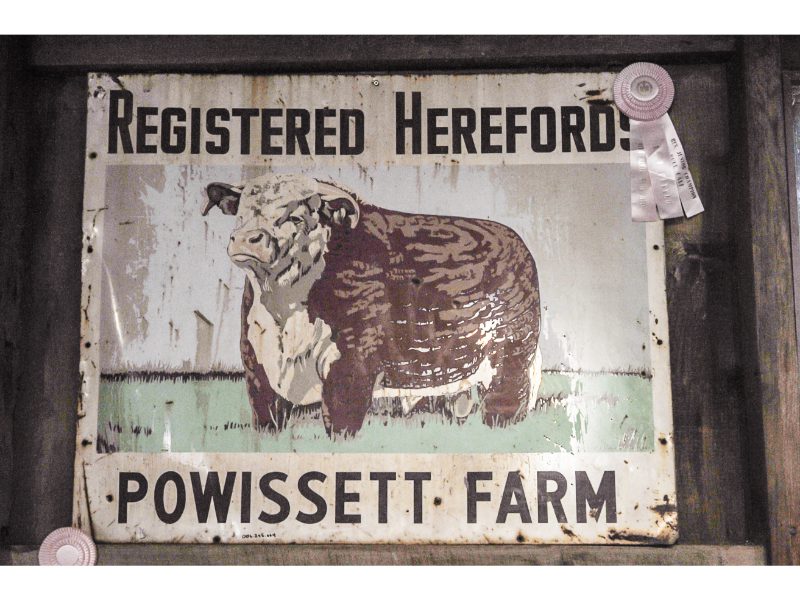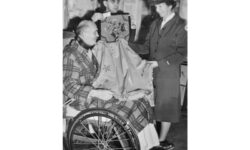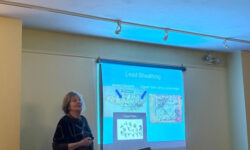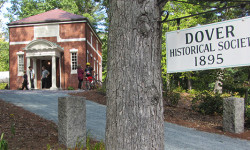By Audrey Anderson
Hometown Weekly Reporter
The Dover Historical Society’s (DHS) “Amelia Peabody: Artist, Philanthropist and Visionary” exhibition opened on Saturday, April 19, in two locations, the Sawin Museum and the Fisher Barn at the Caryl Farm. The exhibition continues the society’s focus on Peabody’s legacy that began with a presentation by Judy Schultz at the society’s Annual General Meeting.
The expertly organized exhibition of Peabody’s sculptures in the Sawin Museum showed her works in chronological order. The earliest works shown were completed in the 1920s, as she learned the traditional art of sculpture from her mentors at the School of the Museum of Fine Arts. As Peabody developed her art in the late 1930s, her work began to show influences of Art Deco and modern art.
The Bust of Captain Charles H. Snellen, 1923, and “Flight into Egypt,” 1922, were examples of the early, traditional, realistic work she created as she learned from established teachers. “Flight into Egypt” is normally on display at the The Dover Church.
“The Bicycle Boy,” 1939, showed a dramatic new approach with a modern sensibility. Made of plaster, its elongated bicycle wheels with hard edges suggested an interpreted commentary on modern life. The sharp edges of the boy’s clothing also signified a less realistic, exaggerated approach. The subject matter was not an exalted figure, but a more quotidian one. “The Bicycle Boy” was exhibited at the 1939 Worlds Fair, “The World of Tomorrow.” It was positioned in a window to beckon visitors inside the art building, a position of honor.
“Hurricane and Flood,” 1938, made of bronze, dramatizes the story of a couple lost in a ferocious storm. Its long, flowing lines curved with the force of the wind. The couple clung together in a life-or-death struggle with nature. This piece’s regular residence is in the Dover Town Library.
“Truck Driver,” 1957, was a ceramic piece that shows a further growth in Peabody’s aesthetic. The truck’s wheel was flattened on the top in an even more interpreted view of a mid-century Everyman dealing with the heaviness of post-World War II America. The driver slouched over the wheel, as he gazed flatly at the road.
The Fisher Barn portion of the exhibit included a model of an 18th century iron mill that was excavated on Peabody’s land by Harvard archeologists. Artifacts found in the dig, pieces of wood from the original structure and various tools, were displayed around the barn. Also in the barn, there was a display of prize ribbons won by Peabody’s livestock. An antique sign featuring her famous Hereford cattle stood out with its strong graphics.
“Amelia Peabody: Artist, Philanthropist and Visionary” will open on Wednesdays from 6 pm to 8 pm, Saturdays from 11 am to 4 pm, and Sundays from noon to 5 pm. Additional information and period video is available on the Historical Society’s website doverhistoricalsociety.org.























